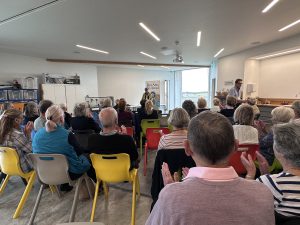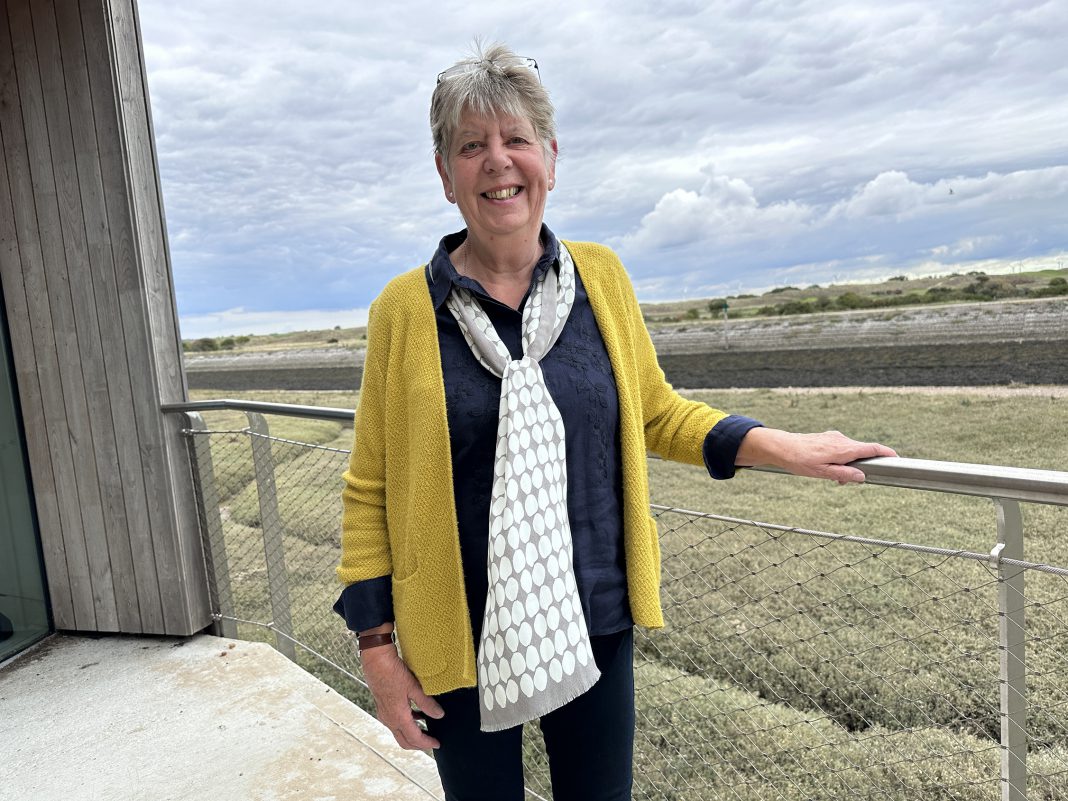This was part two of Pat Argar’s talks for the Rye Arts Festival on the Romney Marsh writers. As before, she admitted to having taken something of a liberty with the geography of Romney Marsh to include Small Hythe, apologizing to topographical purists.
“The writers that are perhaps most associated with Romney Marsh and Rye at this time are, in the main, little known today,” she explained. “They certainly did not form a cohesive group in any way, but nevertheless they knew each other and socialised together. They were friends, they argued and fell out among themselves but they also had all been affected to a lesser or greater degree by the war and this influenced their writing and their lives. Many of these writers, particularly the women, turned to Catholicism and most chose to address the problems of their times in their work. Their work was political in the widest sense. Among this circle were Radclyffe Hall, Sheila Kaye-Smith, Noel Coward, Edith Craig, EF Benson and Russell Thorndike. For the women among them, the war had given them a freedom to be who they wanted to be, allowed them to work and lead their lives in a far less restricted way. Once the war was over, the restraints of the pre-war years could not be re-imposed – these people lived in an irrevocably changed world.”
Pat continued: “Hall provides us with closely observed pictures of the natural world of the Marsh – ‘A heron …heavy powerful wings beating with dignity, slender powerful legs stretched out stiffly behind him … Plovers circled and screamed above their young; moor-hens paddled in and out of the rushes; larks dropped like plummets then soared up and up, seeming to shatter themselves with singing; while the thorn trees … were so heavy with blossom that their boughs were hidden’.
“Likewise she had a clear understanding of the down-to-earth, hard working-class life of those who worked on the Marsh – in July her heroine is thistle spudding: ‘An army of thistles, an army of spudders…The hot sun beat down on the spudders’ heads, on their work-roughened hands and on their shoulders’.
“The Marsh is not without its romance though ‘…an August moon silvered the quiet water of the dykes … a patch of pale marsh mist lay like a ghost of the vanished sea’.
“Kaye-Smith was also a great lover of Romney Marsh. Her best-selling novel Joanna Godden was set entirely on Romney Marsh and in two other novels written in this period we can see her documenting the changes in society that followed the war. The End of the House of Alard tells of the effects of the immediate aftermath of the war on a landed family, while its sequel The Ploughman’s Progress follows one man and his family as the agricultural slump causes an upheaval in rural life. As with Hall, Kaye-Smith highlights poverty but this time in the farming community.

“A local farmer explains how his life has been reduced to poverty: ‘During the war, I got ninety shillings a quarter (for corn). Then after the war, prices dropped to nothing and I gave it up. I kept stock instead and got good prices for that till 1928 or thereabouts; I’d get … forty shillings for a Kent ewe – same as I’ve sold for a shilling today.’ But just as in The Sixth Beatitude the working-class protagonist – in this case the out-of-work ploughman of the title – sees the beauty in the natural world. ‘The sunlight poured after him down the field and lit up the pattern of ridges under the knotty, weed-choked grass, and sent his shadow heeling down to the wood’s edge … Then the sun dipped behind the hedge and the shadows were lost in twilight’.”
Dr Pat Argar’s talks introduce her audience to new authors and books waiting to be discovered. They are peppered with anecdotes and quotations which amuse, entertain and educate.
I hope there may be part three.
Image Credits: Kt bruce .



